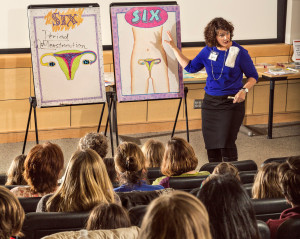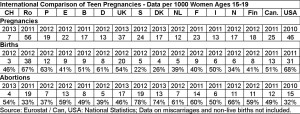Julie Metzger has developed a great recipe for getting parents together with their children to talk about sex.
Let’s Talk (Frankly) About Sex by New York Times writer Bonnie Rochman is an excellent article on Metzger’s work, so we will just direct you right away and take the opportunity to provide a few select teasers:
Julie Metzger, has been trying for nearly three decades to turn what’s so often at best a blush-inducing experience — the “facts of life” talk — into a candid dialogue between parents and children. … Metzger, who is 56 and vigorous, with flushed cheeks and blue eyes, says she has always been comfortable talking about sexuality; her father was a urologist, her mother a nurse. “Hand me a microphone,” she says. “I get so into this topic that I can make myself cry in front of the class, and it’s real.”
Metzger tends to be asked: Why do we have pubic hair? What does it feel like to have a growth spurt? How do I know when I’m getting my period? Does having sex hurt?
In a 2012 survey by the National Campaign to Prevent Teen and Unplanned Pregnancy, 87 percent of teenagers said “open, honest” conversations with their parents could help them put off sex and avoid pregnancy. Students who take part in comprehensive sex-ed programs delay having sex for the first time, have less sex and fewer partners and rely more on contraception than their peers. Conversely, abstinence-only instruction has not succeeded in extending virginity.
We can only applaud Ms. Metzger’s efforts and thank the Times’ Ms. Rochman for spreading the good word. We are happy to spread it further.
Our motto: It’s okay to talk about it.



